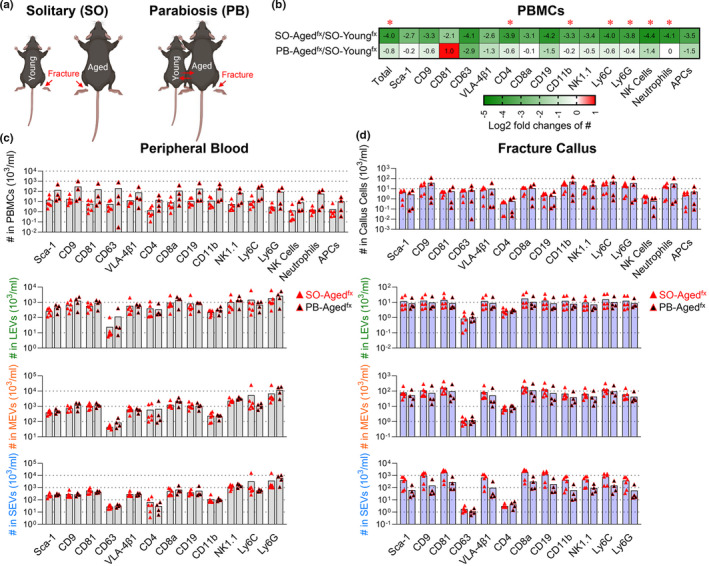FIGURE 6.

Heterochronic parabiosis (PB) increased the number of neutrophils and their associated plasma EVs in agedfx mice. (a) PBMCs and plasma EVs were separated from solitary (SO) youngfx (4 months old) and agedfx (24 months old) mice, as well as heterochronic (youngintact–agedfx, 4 and 24 months) anastomosed PB mice (n = 4 pairs) on D7 post‐fracture, and profiled with the indicated surface markers using high‐resolution multicolor flow cytometry. (b) The heat maps represent a summary of the relative number of PBMCs, LEVs, MEVs, or SEVs for each surface marker depicted as the log2 fold change of two groups: SO‐agedfx/SO‐youngfx mice or PB‐agedfx/SO‐youngfx mice. A 0 reflects an equal number in the two groups; a positive log2 fold change reflects a higher number in the numerator group relative to the denominator group; and a negative log2 fold change reflects a lower number in the numerator group relative to the denominator group. The log2 fold changes were indicated as numbers in each cell of the heat maps. Comparisons between the two groups by an unpaired t test were performed with results indicated as *p < 0.05. (c, d) The graphs present a summary of the number of the different types of hematopoietic cells, and their associated LEVs, MEVs, and SEVs carrying each surface marker in peripheral blood (c) and fracture calluses (d) of SO‐agedfx and PB‐agedfx mice. Comparisons between SO‐agedfx and PB‐agedfx mice were performed using an unpaired t test; the differences did not reach statistical significance (n = 6 mice in each group)
